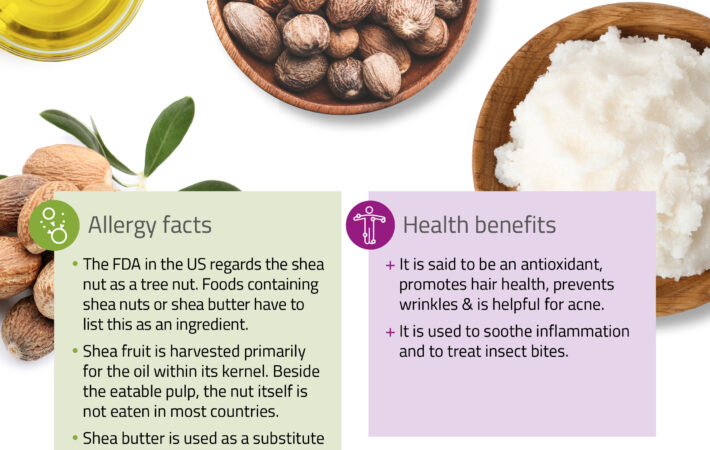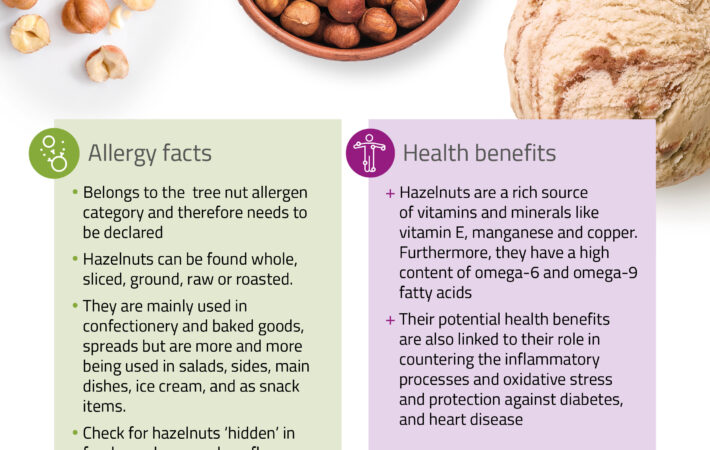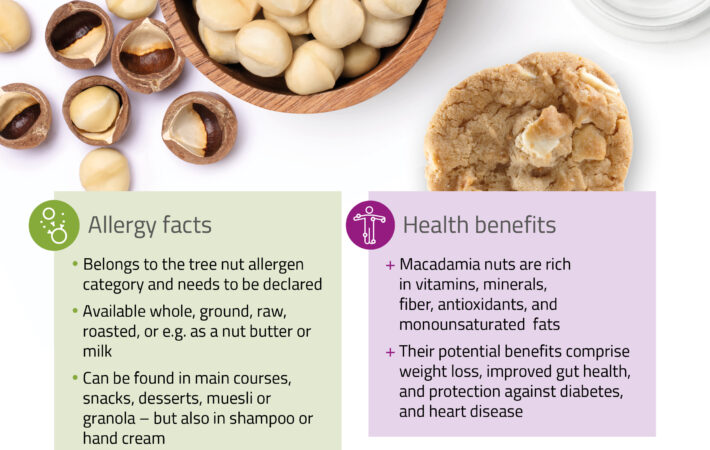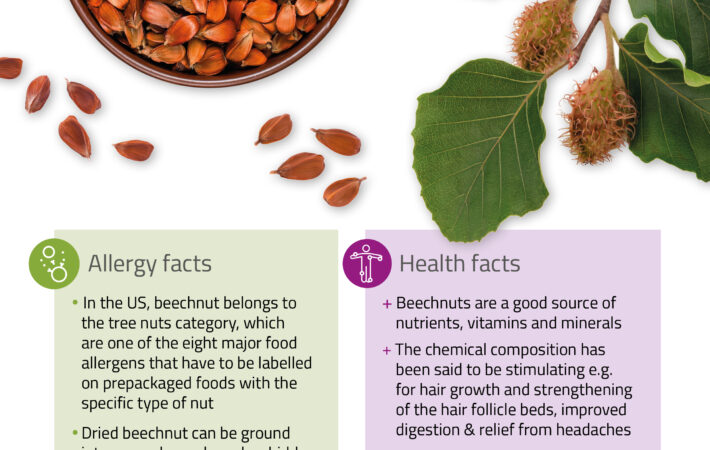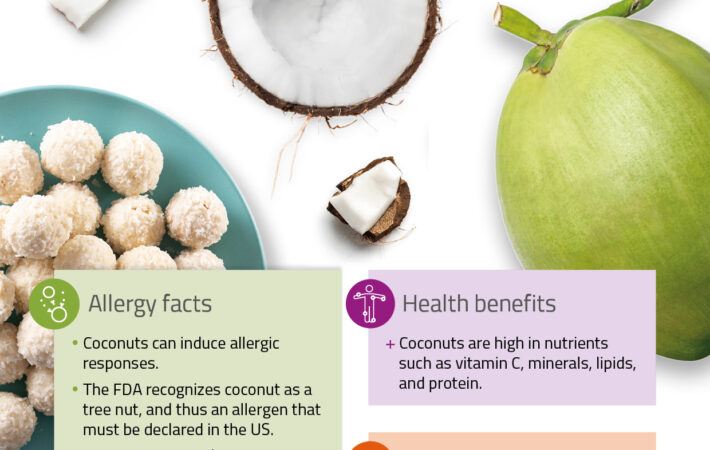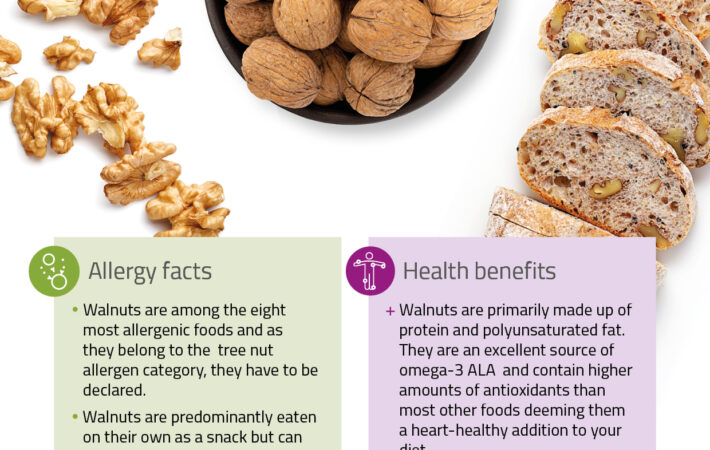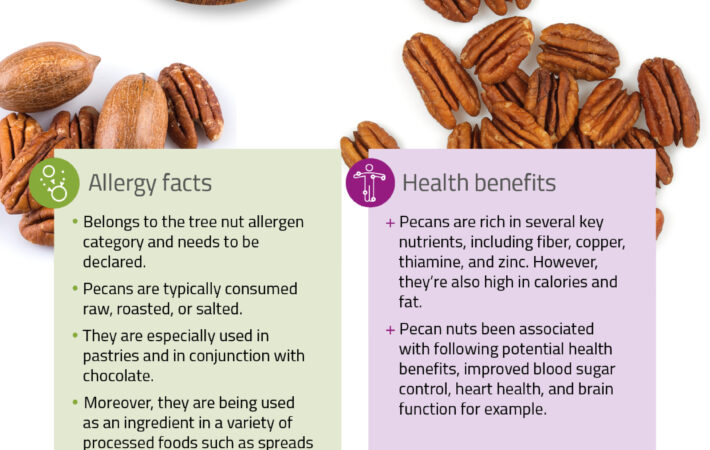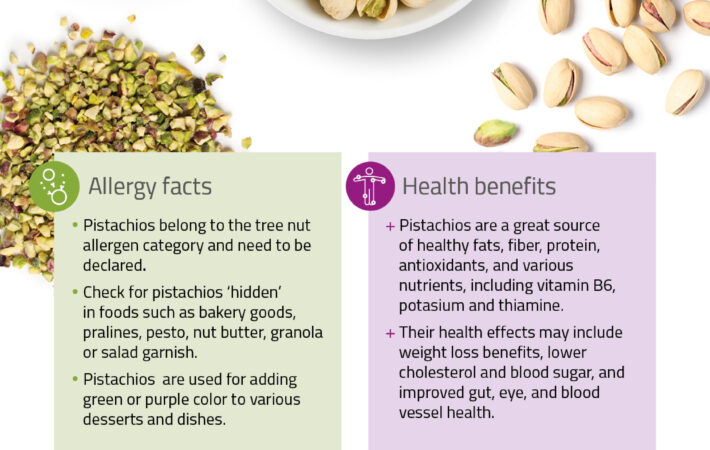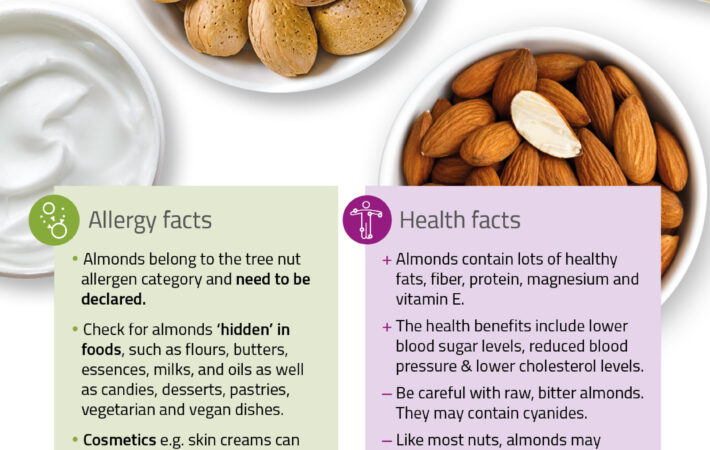
Tree nuts
Reliable tests for the detection of nuts in food
- Home
- /
- Analytes
- /
- Food allergens
- /
- Tree nuts
Tree Nuts: Comprehensive allergy testing solutions
Prevalence and importance of tree nut allergies
Tree nut allergies are among the most common food allergies, affecting approximately one percent of the population. These allergies can cause severe reactions, making accurate detection and labeling crucial for consumer safety.
Definition and allergenicity of tree nuts
The term “tree nuts” refers to nuts that grow on trees, distinguishing them from peanuts, which grow underground and are technically legumes. Not all tree nuts have the same level of allergenicity. For example, hazelnut allergies are particularly widespread, while almonds or coconuts are often better tolerated. Allergy tests can help determine which tree nuts are safe for consumption for individuals with nut allergies.
Regulatory requirements for tree nut labeling
Tree nuts must be declared as ingredients on food packaging according to EU Directive 2007/68/EC, as they are among the most significant allergens. However, cross-contamination can occur in both nut-processing and nut-free facilities, particularly during the production of confectionery, baked goods, chocolate, cookies, cereals, or ice cream. To mitigate this risk, some manufacturers include disclaimers such as “May contain traces of nuts” on their products.
Ensuring nut-free products
For individuals with nut allergies, it is vital to trust that a product labeled as “nut-free” truly contains no nut allergens. Therefore, thorough examination of production areas and end products is essential. R-Biopharm AG offers a comprehensive range of test kits to detect various types of nuts, ensuring the highest standards of food safety.
R-Biopharm AG test kits for tree nuts
Our portfolio includes test kits for detecting the following types of nuts:
- Almond
- Brazil nut
- Cashew
- Coconut
- Hazelnut
- Macadamia
- Pecan
- Pistachio
- Pine nut
- Shea nut
- Walnut
Screening strategy for tree nuts using multiplex PCR
We provide a robust screening strategy starting with a broad screening for the eight relevant tree nuts and peanuts, in compliance with directive (EC) 1169/2011. Positive results can be further identified with one of our three multiplex nut kits if needed. Quantification is also possible using SureFood ALLERGEN identification and quantification kits.
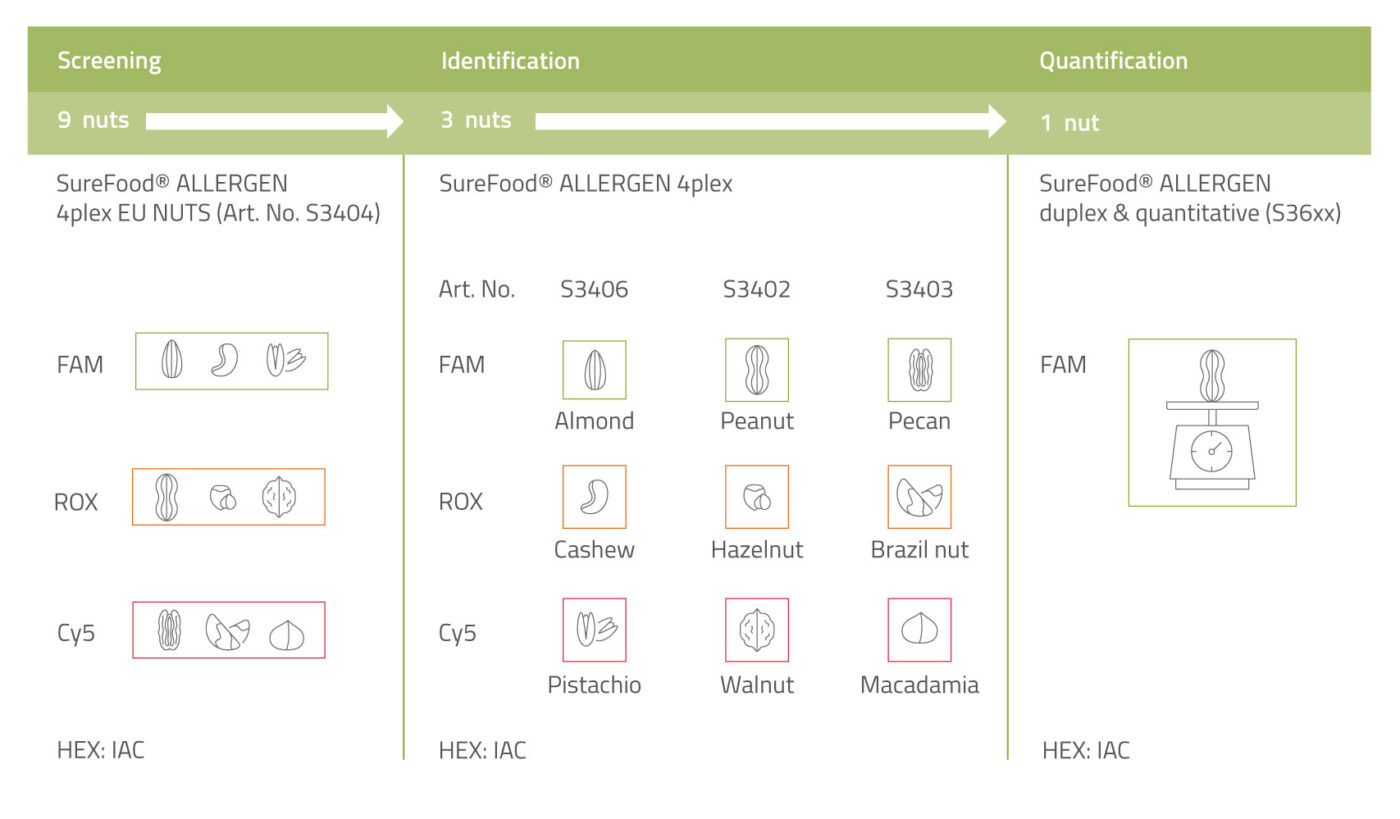
Key benefits of monitoring tree nut allergens
- Consumer safety: Protects individuals with tree nut allergies from potentially severe allergic reactions by ensuring accurate detection and labeling of tree nut allergens in food products.
- Regulatory compliance: Helps manufacturers comply with food allergen labeling regulations, such as EU Directive 2007/68/EC and other international standards, ensuring that all tree nut-containing products are properly labeled.
- Quality assurance: Maintains the integrity and safety of food products by accurately identifying and quantifying tree nut allergens, preventing accidental exposure.
- Cross-contamination prevention: Ensures that food production environments are free from tree nut allergens, preventing cross-contamination and ensuring the safety of allergen-free products.
- Advanced detection methods: Utilizes highly specific and sensitive detection techniques, such as ELISA and real-time PCR, to accurately detect and quantify traces of various tree nuts, even in processed foods.
Conclusion
Monitoring for tree nut allergens is essential for protecting consumer health, ensuring regulatory compliance, and maintaining product quality. By employing advanced detection methods such as ELISA and real-time PCR, manufacturers can accurately identify and quantify tree nut contamination, preventing allergic reactions and ensuring the safety of their products. This proactive approach supports robust allergen management, upholds food safety standards, and fosters consumer trust in tree nut-free products.

